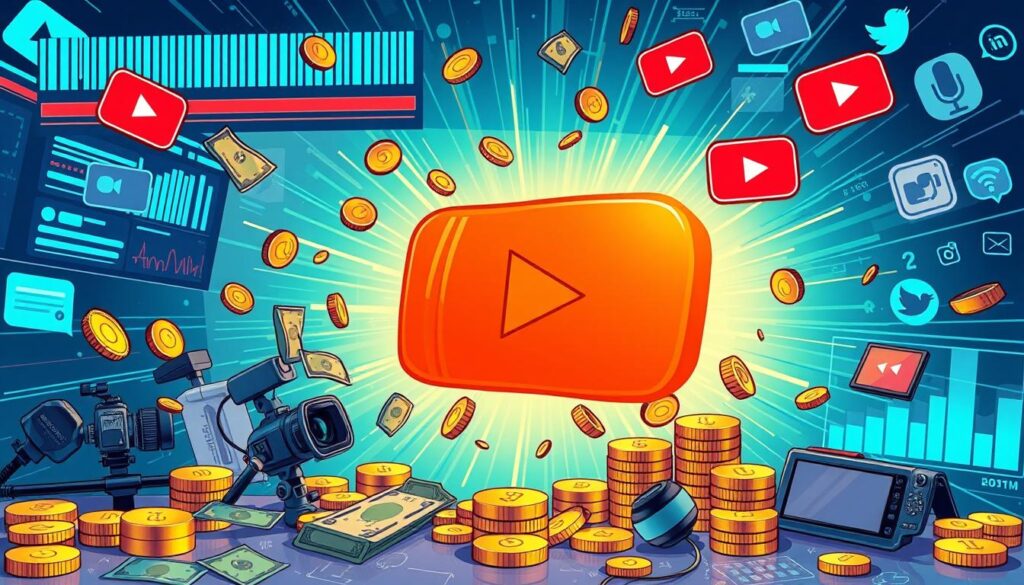In today’s digital age, increasing website traffic is critical for any business seeking to establish a strong online presence. From optimizing content for search engines to leveraging social media, there are numerous strategies to enhance your website’s visibility and attract a larger audience. This comprehensive guide delves into the most effective methods for driving more traffic to your website.
Understanding the Importance of Website Traffic
Website traffic is not just about numbers; it’s about attracting the right visitors who are likely to convert into customers. High-quality traffic can significantly improve your business’s growth, brand recognition, and revenue. By focusing on attracting targeted visitors, you can increase your conversion rates and achieve your business goals more effectively.
Effective SEO Strategies to Increase Website Traffic
Keyword Research and Optimization
Keyword research is the foundation of any successful SEO strategy. By identifying the keywords and phrases your target audience uses to search for your products or services, you can optimize your website content to rank higher in search engine results pages (SERPs). Use tools like Google Keyword Planner, SEMrush, or Ahrefs to find relevant keywords with high search volumes and low competition.
- Long-Tail Keywords: Focus on long-tail keywords, which are more specific and less competitive. These keywords often have higher conversion rates as they target users who are closer to making a purchase decision.
- On-Page SEO: Ensure your target keywords are strategically placed in your title tags, meta descriptions, headers, and throughout your content. Use them naturally to avoid keyword stuffing, which can harm your rankings.
High-Quality Content Creation
Creating high-quality content is essential for attracting and retaining visitors. Your content should be informative, engaging, and relevant to your audience’s needs. Regularly updating your blog with fresh content can keep your audience coming back for more and improve your SEO rankings.
- Blog Posts: Write in-depth blog posts that provide value to your readers. Use a mix of listicles, how-to guides, case studies, and opinion pieces to keep your content diverse and interesting.
- Multimedia Content: Incorporate videos, infographics, and images to make your content more engaging. Visual content can help break up text and make your articles more appealing.
Technical SEO
Technical SEO involves optimizing the backend of your website to improve its performance and user experience. A well-optimized site can lead to better search engine rankings and increased traffic.
- Site Speed: Ensure your website loads quickly. Use tools like Google PageSpeed Insights to identify and fix issues that may be slowing down your site.
- Mobile Optimization: With the increasing use of mobile devices, having a mobile-friendly website is crucial. Ensure your site is responsive and provides a seamless experience across all devices.
- XML Sitemaps: Create and submit an XML sitemap to help search engines crawl and index your website more effectively.
Leveraging Social Media to Drive Traffic
Social media platforms are powerful tools for driving traffic to your website. By building a strong social media presence, you can reach a wider audience and direct them to your site.
Choosing the Right Platforms
Not all social media platforms are created equal. Focus on the platforms that are most popular with your target audience. For example, if your audience is primarily young adults, platforms like Instagram and TikTok might be more effective than LinkedIn or Twitter.
Creating Engaging Content
Post content that resonates with your audience and encourages them to visit your website. This can include:
- Promotional Posts: Share updates about new products, services, or blog posts.
- Interactive Content: Use polls, quizzes, and live videos to engage your audience and prompt them to visit your site for more information.
- User-Generated Content: Encourage your followers to create and share content related to your brand. This can help build a sense of community and trust around your business.
Paid Advertising
Investing in paid social media advertising can significantly boost your website traffic. Platforms like Facebook, Instagram, and LinkedIn offer targeted advertising options that allow you to reach specific demographics.
- Ad Campaigns: Run ad campaigns that promote your website or specific landing pages. Use eye-catching visuals and compelling copy to attract clicks.
- Retargeting: Use retargeting ads to reach users who have previously visited your website. This can help bring back potential customers who didn’t convert on their first visit.
Email Marketing to Increase Website Traffic
Email marketing remains one of the most effective ways to drive traffic to your website. By building a strong email list and sending regular newsletters, you can keep your audience engaged and informed about your latest updates.
Building Your Email List
Encourage visitors to subscribe to your email list by offering incentives such as discounts, free resources, or exclusive content. Use sign-up forms on your website and social media channels to capture email addresses.
Crafting Engaging Newsletters
Create newsletters that provide value to your subscribers. This can include:
- Blog Updates: Share links to your latest blog posts to drive traffic to your site.
- Exclusive Offers: Provide special discounts or promotions available only to your email subscribers.
- Industry News: Share relevant news and insights that your audience will find interesting and useful.
Utilizing Influencer Marketing
Collaborating with influencers in your industry can help you reach a larger audience and drive more traffic to your website. Influencers have established credibility and a loyal following, making them valuable partners for promoting your brand.
Finding the Right Influencers
Identify influencers who align with your brand values and have a significant following within your target market. Use tools like BuzzSumo or Influence.co to find and connect with potential influencers.
Creating Collaborative Content
Work with influencers to create content that promotes your website. This can include:
- Sponsored Posts: Have influencers write posts or create videos that feature your products or services.
- Guest Blogging: Invite influencers to write guest posts for your blog, providing their unique insights and driving their followers to your site.
- Social Media Takeovers: Allow influencers to take over your social media accounts for a day, providing fresh content and attracting their audience to your channels.
Analyzing and Improving Your Strategies
Regularly analyze your website traffic and marketing efforts to identify what’s working and what needs improvement. Use tools like Google Analytics to track your traffic sources, user behavior, and conversion rates.
Setting Goals and KPIs
Set specific, measurable goals for your website traffic and define key performance indicators (KPIs) to track your progress. This can include:
- Traffic Volume: Measure the number of visitors to your site.
- Bounce Rate: Track the percentage of visitors who leave your site after viewing only one page.
- Conversion Rate: Measure the percentage of visitors who complete a desired action, such as making a purchase or filling out a contact form.
Adjusting Your Strategies
Based on your analysis, make adjustments to your strategies to improve your results. This can include:
- Content Optimization: Update your content to include new keywords, add more detailed information, or improve readability.
- Marketing Campaigns: Refine your social media and email marketing campaigns to better target your audience and improve engagement.
- Technical Improvements: Continuously monitor and improve your site’s performance, speed, and mobile optimization.
By implementing these strategies and continually optimizing your efforts, you can significantly increase your website traffic and achieve your business goals.






